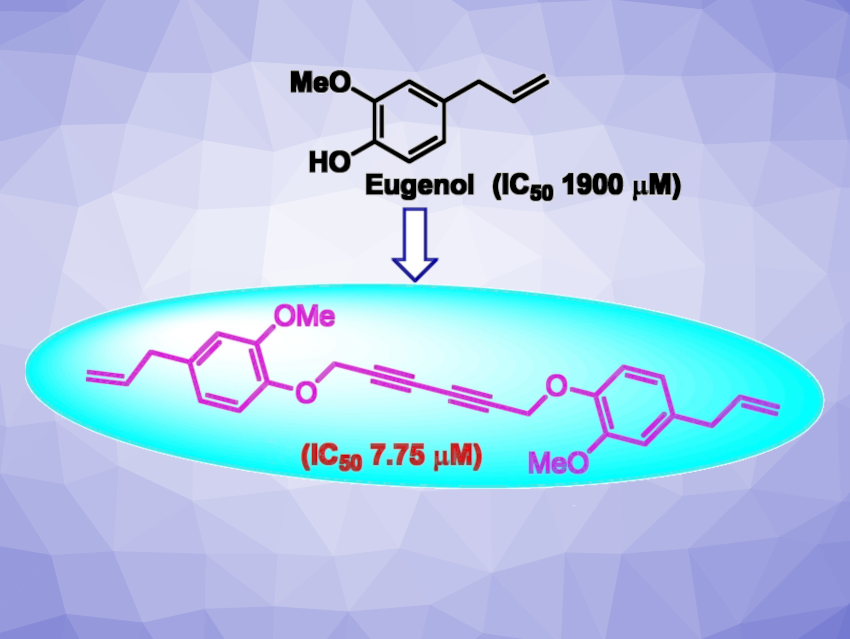Aspergillus fumigatus is an airborne opportunistic fungus that can survive in a wide range of climatic conditions and poses a health threat to humans. Resistance to antifungal drugs is an emerging concern. The development of new potent antifungal drugs with better efficacy is, thus, an important research target. Eugenol and isoeugenol have shown antifungal activities against A. fumigatus.
Pooja Vijayaraghavan, Amity University, Noida, India, Asish K. Bhattacharya, CSIR-National Chemical Laboratory (CSIR-NCL), Pune, India, and Academy of Scientific and Innovative Research (AcSIR), Ghaziabad, India, and colleagues have designed and synthesized 1,3-diyne scaffolds based on propargylated derivatives of eugenol, isoeugenol, and other phenolics using Glaser–Hay and Cadiot–Chodkiewicz coupling reactions to generate a small library of potential antifungal agents. The team achieved the synthesis of 1,6-diphenoxyhexa-2,4-diyne derivatives via these Cu(I)-catalyzed couplings using propargylated eugenol, isoeugenol, guaiacol, vanillin, or dihydrogenated eugenol. The products were obtained in good to excellent yields.
All compounds were evaluated for their activity against A. fumigatus. One compound (pictured), in particular, showed promising antifungal activity with an IC50 value of 7.75 μM. It also showed significant anti-biofilm activity. These results suggest that this type of scaffold could be useful for developing new antifungal agents.
- Design and Synthesis of 1,3‐Diynes as Potent Antifungal Agents against Aspergillus fumigatus,
Lakshmi Goswami, Lovely Gupta, Sayantan Paul, Pooja Vijayaraghavan, Asish K. Bhattacharya,
ChemMedChem 2023.
https://doi.org/10.1002/cmdc.202300013




